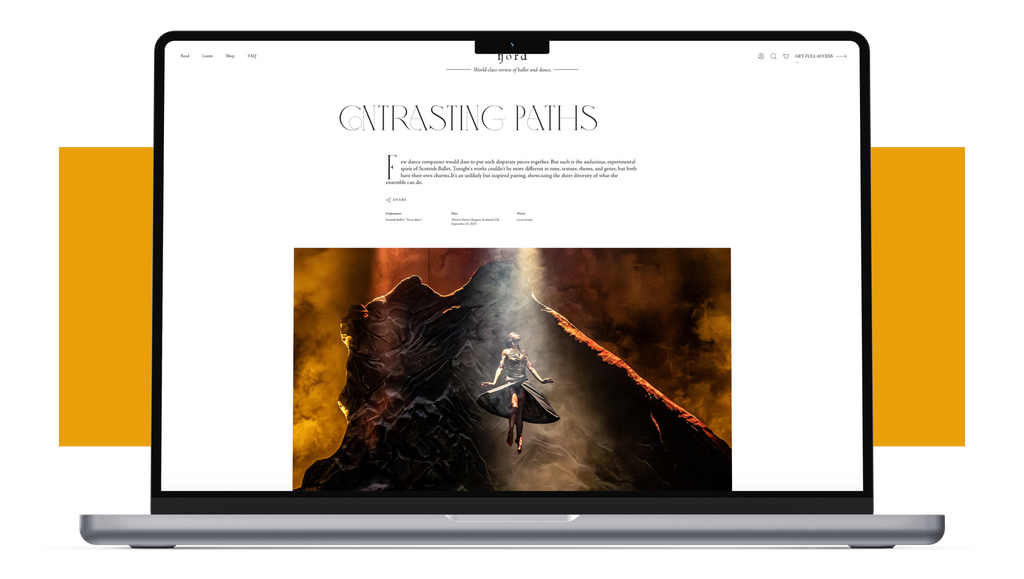One dancer wears traditional shoes; one wears socks. Butler is barefoot. The dancers mark through traditional positions—arms held tightly to the sides with a toe pointed forward—while rolling their shoulders and sitting back into their hips. The movement is slight and slow, performed almost unconsciously like distant memories in a sleepwalking daze.
This sleepwalking transforms into a dream as the audience is invited back into the room where we started. Ethereal synthesizer sounds echo as a multigenerational group of dancers ranging in ages 15 to 70 stand dispersed in the space, glancing around at one another with pleasant, peaceful smiles. This is a touching moment, especially after having listened to the many voices and stories of Irish dancers through the “Our Story” recording. Again, the audience finds itself in that in-between place where time and space have suspended, as we move through a cloud of witnesses who are meeting each other perhaps for the very first time.
Tom Cashin, a champion Irish dancer who was also interviewed as part of the “Our Story” project, shares a solo from his youth. Butler and “Riverdance” co-star Colin Dunne perform a jovial duet in sync. Maren Shanks, the youngest of the cast who is dressed in the most traditional-looking costume (by Reid Bartelme and Harriet Jung), flies in circles around the space with a travelling step that produces a gust of wind each time she passes.
These brief spirited bursts come as welcome contrasts in an overall minimalist piece. The movement of “What We Hold” is largely gentle and relaxed, sort of like a whisper. This restraint is often engaging, but it sometimes loses its effect, leaving the audience wanting a grander or more prolonged shift in dynamic.











comments